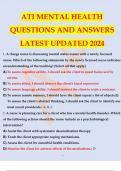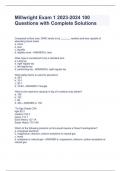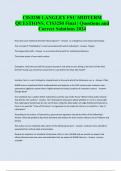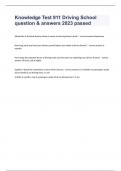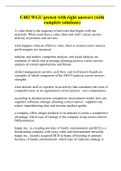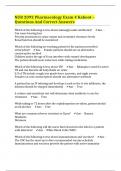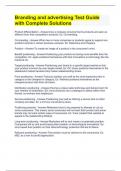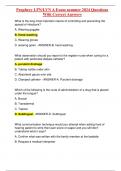Other
Pharmacology Revision Tables (every body system bundle deal 43% off)
- Course
- Institution
10 Different pharmacology tables for each bodily system (Cardio, GI, Respiratory, Renal, Endocrine, MSK + Rheumatology, Ophthalmology, Haematology, Psychiatry and Neurology) Information includes: - Name and class of medication - Indications for use - Mechanism of action - Side effects and in...
[Show more]




